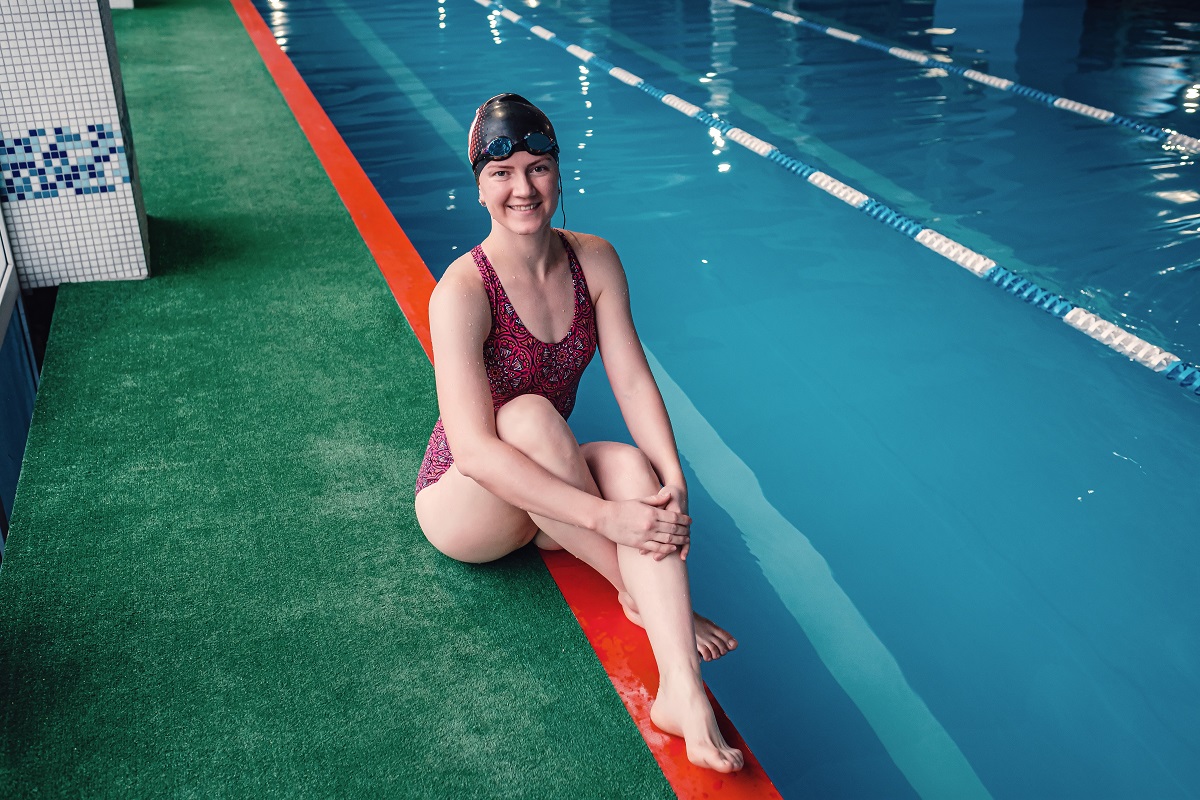As a swimming instructor, swimming coach and personal trainer, I’m often asked, “Is swimming good to lose weight?” The simple answer is yes, but there are many factors to consider when looking at swimming as a weight loss method. In this comprehensive blog post, we’ll discuss the effectiveness of various swimming styles for weight loss, compare swimming to other forms of exercise, highlight additional benefits of swimming and provide information on how frequently or how long one should swim for optimal weight loss benefits. This guide is tailored for beginners, experienced swimmers and people with specific health conditions.
Is swimming good to lose weight?
When it comes to weight loss, swimming is an excellent choice for several reasons. It is a full-body workout, meaning you’re using most of your muscle groups, which helps to burn calories and increase your metabolic rate. Additionally, swimming is a low-impact form of exercise, making it suitable for individuals with joint issues or other health conditions.

Swimming styles for weight loss
There are several swimming styles, each with its own benefits when it comes to weight loss. Here’s a quick rundown:
- Freestyle: This style is the most common and efficient form of swimming. It is an excellent calorie burner, as it engages your entire body.
- Breaststroke: This style is more accessible for beginners and is gentle on the joints. It’s a good option for those with joint or lower back issues but still provides an effective workout.
- Butterfly: This is an advanced swimming style that requires a lot of energy and strength. It burns a significant number of calories but may not be suitable for everyone.
- Backstroke: This style is beneficial for those with lower back pain, as it alleviates pressure on the spine. It provides a full-body workout and burns a considerable number of calories.
Comparing swimming to other forms of exercise for weight loss
Is swimming good to lose weight compared to other forms of exercise? Let’s take a look:
- Running: While running generally burns more calories than swimming, it is a high-impact exercise, which may not be suitable for those with joint issues or certain health conditions.
- Cycling: This low-impact exercise is excellent for weight loss and cardiovascular health. However, it mainly focuses on the lower body, unlike swimming, which engages the entire body.
- Yoga: Though yoga has many benefits, it typically burns fewer calories than swimming. However, it’s a good option for those looking to improve flexibility and mindfulness.
- Weightlifting: This form of exercise can help build muscle mass, which in turn, helps burn calories. However, it does not offer the same cardiovascular benefits as swimming.
- HIIT (High-Intensity Interval Training): HIIT workouts can burn a significant number of calories in a short amount of time. They are an excellent option for weight loss but can be intense for those with specific health conditions.
Additional benefits of swimming
Apart from weight loss, swimming provides several other benefits, such as:
- Improved cardiovascular health
- Enhanced flexibility and muscle tone
- Reduced stress and improved mental well-being
- Social engagement through group classes or clubs
How Frequently Should You Swim for Optimal Weight Loss?
Is swimming good to lose weight if you only do it occasionally? For optimal weight loss benefits, it’s best to swim consistently. Aim for at least 30 minutes, three to four times a week. As your fitness level improves, you can increase the duration and intensity of your workouts.

Success story
One of my clients, Sarah, had been struggling with weight loss for years. She had tried various diets and exercise routines, but nothing seemed to work. As someone with knee issues, she needed a low-impact exercise that was effective for weight loss. That’s when she turned to swimming.
After consulting with me, Sarah started swimming three times a week, focusing on freestyle and backstroke. Over the course of six months, she saw incredible results. Not only did she lose 20 pounds, but she also experienced improvements in her cardiovascular health, flexibility and overall well-being. Sarah’s success story demonstrates that swimming can be a highly effective weight loss tool for individuals with specific health conditions or joint issues.
Swimming for beginners, experienced swimmers and people with specific health conditions
Is swimming good to lose weight for beginners, experienced swimmers and people with particular health conditions? Yes, indeed! Here are some tips for each group:
Beginners:
- Start with a swimming style that is comfortable for you, such as breaststroke or freestyle.
- Consider taking swimming lessons or joining a beginner’s swimming group to build your confidence and technique.
- Gradually increase your swimming duration and intensity, focusing on consistency rather than speed.
Experienced swimmers:
- Vary your swimming styles to engage different muscle groups and avoid boredom.
- Incorporate interval training into your routine for increased calorie burning and improved cardiovascular health.
- Set goals for yourself, such as improving your lap time or increasing the number of laps you swim during each session.
People with specific health conditions:
- Consult with your doctor before starting a swimming routine to ensure it is safe and suitable for your needs.
- Choose swimming styles that are gentle on your joints and muscles, such as breaststroke or backstroke.
- Pay attention to your body and adjust your swimming routine accordingly to avoid overexertion or injury.

Increasing the intensity of your swimming workouts
As your fitness level improves, you may want to increase the intensity of your swimming workouts to continue reaping the weight loss benefits. Here are some ways to do that:
- Add resistance: Using tools like hand paddles, kickboards or pull buoys can increase water resistance, making your muscles work harder.
- Perform intervals: Incorporate intervals of high-intensity swimming followed by periods of rest or lower intensity swimming. This helps to increase your heart rate and burn more calories.
- Focus on technique: Improving your swimming technique can make your strokes more efficient, enabling you to swim faster and burn more calories.
- Combine swimming with other exercises: To keep your workouts fresh and exciting, consider combining swimming with other forms of exercise, such as water aerobics, aquatic strength training or even running in the water.
- Train with a group or a coach: Working with a group or a coach can help you stay motivated and push yourself harder during your swimming sessions.
In summary of “Is swimming good to lose weight”
So, is swimming good to lose weight? Absolutely! Swimming is a versatile, low-impact exercise that engages the entire body, making it an excellent choice for individuals looking to lose weight. By incorporating various swimming styles into your routine, comparing swimming to other forms of exercise and considering the additional benefits of swimming, you can tailor your workout plan to suit your individual needs and health conditions.
Swimming is an excellent option for those looking to lose weight, regardless of their fitness level or health conditions. By choosing the right swimming styles, varying your workouts and staying consistent, you can achieve your weight loss goals while enjoying the many additional benefits that swimming has to offer.
Remember Sarah’s success story and know that with dedication and consistency, you too can achieve your weight loss goals through swimming. So, dive in and start reaping the rewards of this fantastic, low-impact exercise today!
Remember, consistency is key. Aim to swim for at least 30 minutes, three to four times a week, to reap the maximum weight loss benefits. Happy swimming!
